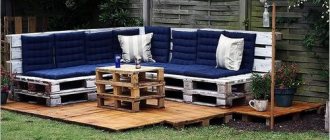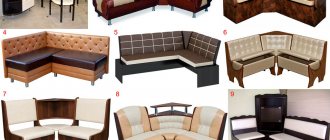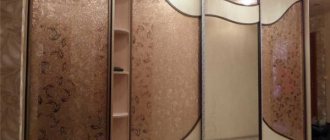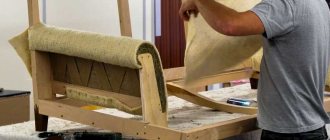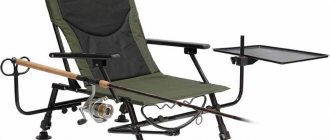How is the sofa arranged - what elements does it consist of?
First, let's look at how the sofa is constructed and what elements the structure consists of. Please note that depending on some model specifications, certain components may not be used. Typically the following parts are included.
- Armrest. It is usually made from the same material as the frame. Can be decorated with upholstery. In many cases, upholstered furniture involves placing filler in the armrests. Sometimes supplied with decorative overlays.
- Upholstery. The main decorative element also protects the filler from damage. One material can be used in a circle, or one material can be used on the front part, and another less decorative and cheaper one at the back. The second option can often be found in wall-mounted models.
- Filler. The main element provides a soft surface and adds volume.
- Gasket made of polyurethane foam (PPU). Used in furniture with spring blocks. Allows you to evenly distribute the load.
- Spring block. A type of filler is often mistaken for a separate structural element.
- Burlap or felt. Used when combining wood and metal in construction. Place burlap between the mating parts, minimizing squeaking.
- Mattress base. The part of the frame on which the soft part of the sofa is placed.
- Roller guide. Present if there is a drawer. Located at the bottom of the furniture. Sometimes there is a steam room. Often made of metal.
- Box, drawer or niche. These are additional elements that are designed for comfortable storage of things or bedding.
- Retractable part. May occur with some types of furniture transformation. Sometimes combined with a linen drawer.
- Transforming mechanism. There are several different ways to transform. Each of them uses a specific mechanism.
Understanding the structure of a sofa, it is much easier to navigate their diversity when choosing.
Elements of the sofa design that affect its service life
Next, the design elements are arranged in order of importance. From the most important to the least important.
sofa frame
The frame provides the foundation for the entire structure. The permissible load on the sofa depends on the material of the frame, both in terms of the permissible weight of the load and the possible intensity of use of the sofa.
Do not buy sofas with frames made of chipboard or similar fragile materials. Such a frame can break, especially at times of peak load. Chipboard frames are definitely not recommended for use in sofas for living rooms and in bedrooms for sleeping.
For the frame, it is preferable to use deciduous wood - birch, beech, oak. More often you can find a frame made of pine or spruce. Coniferous woods are more brittle, especially if there are knots in the wood. Look for knots when purchasing!
It’s even better if the frame is made of metal. Of course, you need to look at the quality of the metal. A thin-walled pipe or square is also not very strong. It is desirable that the thickness of the pipe wall be at least 3 mm, and its diameter should be at least 35 mm.
Conclusion on the frame: A frame made of good material will increase the cost of the sofa, but such an item will last a long time. I think it’s not worth saving on the frame.
Sofa filler
The filling gives the sofa its shape and ensures the durability of this shape. You've probably seen sofas with crumpled edges. It was the filler that let the owner of the sofa down. A detailed article about fillers can be found at this link.
The general conclusion regarding fillers is this: it is better to buy a sofa with a spring block. Its service life is longer and ease of use is higher than that of other materials.
Sofa transformation mechanism
There are many mechanisms for folding sofas. The choice of mechanism depends on the intensity of use of the sofa in different positions. How often do you unfold and fold it?
For example, we use the sofa in the bedroom every day during the day for sitting, and at night we convert it into a sleeping place, or the sofa in the kitchen is folded out only when guests stay late and spend the night. In these examples, the importance of the transformation mechanism is different. Therefore, in the first example it should be very reliable, and in the second example you can save on it.
You can learn more about possible transformation mechanisms, their advantages and disadvantages here.
Conclusion on sofa mechanisms: choose a mechanism depending on the frequency of its use
Sofa upholstery
As you can see, the upholstery was in last place in my rating. Of course, the upholstery is the appearance of the product and how long your sofa will have a “marketable appearance” will depend on its quality. But if it wears out, it can be replaced, but with other structural elements this is much more difficult and expensive.
A separate article is devoted to upholstery fabrics. It contains all the details about upholstery fabrics and tips for choosing them.
Conclusion on sofa upholstery: do not chase only the external beauty of the sofa. Analyze all design elements. Remember that upholstery is the easiest to change.
Sofa frame - types
The basis of any sofa is the frame. It is this device that takes on all the loads during operation. Taking into account this factor and the expected intensity of choice, you can choose the optimally suitable furniture.
Types of frames are usually distinguished based on the base material. The following types of frames are available.
- Wooden. The base is wood, usually hardwood. A classic option suitable for any interior. Resistant to loads.
- Metal. They tolerate any load well. They are distinguished by their high mass, which is not always convenient. They look good.
- Combined. They combine two materials at once, usually using durable metal or wood and complementing it with a less reliable one. As a result, the sofa turns out to be quite reliable and less expensive.
Frameless models are worth mentioning separately. They do not have a rigid frame; they are quite interesting sofas for relaxation. When choosing, you should look at the material of the cover, which serves as a frame that gives shape. They also take into account what is inside the sofa. Most frameless sofas are not intended for night rest. If you need a sleeping place, it is better to choose more familiar options.
Key elements in the structure of the sofa
The sofa works as a single unit, in which each element performs its function. The combination of these functions is designed to ensure safe operation and long service life of the furniture.
A typical sofa filling consists of the following elements:
- The frame is the basis of the sofa, its backbone. It can be made of metal, wood or chipboard. Chipboard is a less reliable, but cheaper material. The lifespan of the sofa depends on the strength of the frame.
- A spring block responsible for maintaining the shape of the sofa.
- Foam filler that creates softness and volume.
- Polyurethane foam padding that helps the foam rubber absorb shock. A layer of padding polyester.
- Fabric upholstery of the sofa, hiding the overall structure from the eyes of observers, designed to complement the interior and satisfy aesthetic needs.
- Armrests made of chipboard, wood or metal. Subject to rapid wear, they must be upholstered with wear-resistant material.
- Felt that protects metal from friction against plywood.
- Fiberboard as the base of the mattress.
- Rail for rollers in the presence of retractable mechanisms.
- Non-woven fabric.
- Shelf for bedding.
Depending on the specific sofa model, it may also contain other components.
Unfortunately, it is not possible to check some items in the store. You have to trust the honesty of the manufacturer. This, in particular, is the inside of the sofa mattress.
Mechanisms
The transformation mechanism is designed for comfortable unfolding of the sofa. This is done to turn furniture into a bed. This solution allows you to combine two functionalities in one product.
There are several types of mechanisms. The choice depends on the characteristics of the room; some of the methods require a large area. You also need to consider the frequency of use. It’s one thing when the sofa is folded out from time to time, but it’s another thing when it’s used every day.
For a full choice, it is necessary to study the mechanisms in more detail. They are varied and have many features, which can influence the final choice.
Some stationary sofas are not equipped with a transformation mechanism. It is also not available in modular and frameless varieties.
Filler
When examining what the sofa consists of, it is impossible not to mention the filling. It affects the life of the sofa, and the quality of the filling also affects the comfort during use. Typically, the following types of filler are distinguished.
- Spring blocks. These are steel springs woven together. Provide sufficient elasticity.
- Polyurethane foam. One of the most common synthetic materials. Completely harmless to humans. May have varying degrees of hardness.
- Foam rubber. This name hides several types of materials of similar origin. They differ in density, which affects the comfort of use.
- Sintepon. Commonly used in guest sofas. The degree of comfort depends on the thickness of the filler layer.
- Batting. Non-woven cotton filling. Placed in several layers. Reacts poorly to high humidity.
- Holofiber. Modern synthetic fiber. It has the shape of hollow springs twisted in a spiral. Make sure that the filler is distributed evenly throughout the product.
Upholstery
There are also several types of upholstery.
- Velours. Velvety material. It is necessary to look at the uniformity of the placement of the pile.
- Scotchgard. When choosing, look at the density of the material.
- Jacquard. Often chosen by appearance, this is one of the most important parameters.
- Thermal jacquard. It differs from the previous material by the presence of a thermal pattern. When choosing, you need to look at the density and quality of the pattern.
- Chenille. Synthetic fabric. It is worth paying attention to the quality of the pile.
- Flock. The main parameter here is the uniformity of the placement of the villi.
- Artificial leather (eco leather). When choosing, evaluate the quality of the fabric and the absence of defects.
- Genuine Leather. When choosing a sofa with such a finish, you need to take into account the type of finish.
- Matting. They look first of all at the density of the fabric.
Knowing what elements affect the quality of operation of the sofa, you can select it most accurately. Taking into account all the design elements, you can choose furniture that is completely suitable for you.
Choosing a frame: types of materials, advantages and disadvantages
The frame of the sofa serves as the basis for shaping the appearance and giving softness to the product. It also performs the main strength function of the sofa both during transportation and during its operation.
The frame of upholstered furniture (couches, straight sofas, children's sofas, etc.) should be relatively light and durable.
Types of frames:
- wooden;
- metal;
- multilayer plywood;
- MDF;
- chipboard;
- combined.
Wooden frame
Made from solid hardwood. Sofas with a wooden frame are distinguished by their impressive appearance, high reliability and environmental safety. The most economical products are those whose frame is made of coniferous trees, but they are not highly durable. More expensive types of wood include beech, oak, walnut and ash. But birch is considered ideal in terms of price and quality. In high-quality frames, the connection should be bolted. Please note that in quality timber frames the connection should not be made using screws or glue.
Metal carcass
It will complement well a room made in a modern style, for example, minimalism, modern or hi-tech. However, metal can also be used as an additional material in timber frames. Among the advantages we should highlight: - strength; — reliability in operation; — durability; - relatively low cost. Sofas with a metal frame can be easily repaired by replacing the upholstered part. In high-quality sofas, the frame elements must be fastened together using bolts or welding. In some cases, metal parts are nickel-plated, chrome-plated and anodized.
Multilayer plywood frame
Plywood is made by gluing together sheets of veneer (often birch) in a hot press under pressure. They are superimposed so that the fibers in adjacent sheets lie perpendicular to each other.
Multilayer plywood is highly durable and has a smooth surface. It does not crack, does not dry out, has high flexibility and low weight. Its cost and quality depend on the thickness of the material. Thicker and more expensive plywood (at least 8 mm, ideally from 12 mm) is intended to strengthen the frame. Advantages: — absence of harmful fumes; — durability; — strength and reliability; — absence of deformation and squeaks during operation; - affordable price.
MDF (Medium Density Fiberboard)
Produced under high pressure. The bonding agent is lignin, a natural material formed when small wood chips are heated. MDF is slightly inferior to coniferous wood in terms of rigidity and strength. Advantages: - low level of warping; — high resistance to drying out; — high strength; — environmental safety (can be used by allergy sufferers); - moisture resistance. However, you should be aware that with prolonged exposure to water, the material swells and may break due to excessive use. Compared to a natural wooden frame, this slab is much heavier.
Chipboard
Compared to its competitors, particle board is considered the most economical and short-lived material. It is formed by pressing shavings and sawdust with the addition of synthetic binding elements such as formaldehyde or epoxy resins. If you are planning to buy a sofa with a chipboard frame, then buy it only from reliable stores that have the appropriate quality certificates. If the frame is created in accordance with technical standards, then it does not pose a health hazard. Main advantages: - low cost; — good chipboard strength characteristics even under conditions of daily intensive use; — resistance to moisture and temperature changes; — good resistance to delamination and drying out; - lack of tendency to form mold and pests; - long service life.
Frame made of combined materials
Trends in modern furniture construction are changing, and therefore manufacturers have begun to create frames from mixed materials:
- Chipboard with wood (minimizes the cost of the sofa and allows you to maintain the characteristics of durability and reliability);
- metal with birch (used in certain types of sofas);
- Chipboard with the addition of plywood (the use of plywood gives the product high wear-resistant properties and increases its class).
